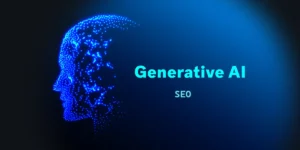Google stunned the SEO world in late 2023 by announcing their new Search Generative Experience (SGE) powered by advanced AI models. SGE provides users with automatically generated answers, summaries, and recommendations for their search queries without needing to click on a specific search result.
This poses a major challenge for SEOs who have spent years optimizing websites to rank higher in Google’s traditional ten blue links. With SGE providing direct answers, getting organic traffic from high rankings matters much less.
However, all is not lost. Here is a guide on how to optimize Google’s new SGE algorithm in 2024.
Understand How SGE Works
The key to ranking is understanding what signals Google uses. With SGE, Google crawls current web content and processes it through large language models to generate entirely new text, lists, and other media as search results.
So, ranking highly requires having content that helps Google’s AI better understand topics and entities to generate useful search experiences. Optimizing for organic traffic is replaced by optimizing to assist the AI.
Provide Structured Data
One of the most important things is providing extensive structured data. This includes schema markup, knowledge graphs, and entity relationships. The more structured data about topics that your content contains, the better SGE can understand key elements to weave into search experiences.
Make liberal use of schema.org markup, JSON-LD, etc. to have clean structured data. Maintain your own knowledge graphs if dealing with complex or industry-specific topics the general Google graph may lack. Put effort into interlinking related entities in content through mentions and high-quality links.
Produce Long-Form, In-Depth Content
SGE rewards extremely in-depth, authoritative content. The more thoroughly you cover a topic, the better. Think 10,000-word definitive guides that dive into all aspects. Include varied formats like text, images, video, tables, and charts as relevant.
Also emphasize visual content like YouTube videos, presentations, and graphics. SGE is designed to showcase visual elements alongside text in search.
Incorporate Diverse Inputs
A key aspect of large language models behind SGE is ingesting diverse inputs during training, including both text and visual media across different subtopics. Reflecting similar diversity can help your content be utilized better.
Within long-form posts, utilize relevant quotes, examples, expert opinions, public references, primary sources, and studies/statistics appropriately. Support written explanations with images, infographics, and videos throughout rather than just walls of text.
Cite External Authoritative Sources
In line with providing diverse inputs, incorporate links and references to reliable external sources frequently. Google rates sites highly that are linked to other established sites on relevant topics. This principle still applies for SGE.
Curating and linking out to high-quality external content demonstrate you also provide value through credible sourcing, not just your own content. When listing external references, briefly summarize key relevant aspects that support or contrast with points being made.
Craft Content for Understandability
Large language models perform best when content is optimized for comprehension and clarity. SGE rewards content to be more readable and digestible by AI. This includes:
- Simple, direct sentences and paragraphs focused on single ideas.
- Appropriate headings and formatting.
- Bold key terminology and provide clear definitions.
- Summarize complex concepts simply before elaborating details.
- Use bulleted and numbered lists for key points rather than blocks of dense text.
- Include a table of contents for long posts.
Follow these readability best practices tailored for AI consumption.
Leverage AI Tools in Creation
An ironic aspect of ranking for an AI-powered search algorithm is using AI yourself in crafting content! Employ the latest natural language generation tools to enhance writing:
- Use AI semantic search to research and suggest related concepts as you write posts.
- Take advantage of predictive writing capabilities in applications like Google Docs as you draft sections.
- Use Grammarly or other AI grammar checkers to correct mistakes.
Try AI rewritten suggestions through tools like Quillbot to rephrase and enhance readability of paragraphs.
Blending computer-assisted writing and editing with human creation helps develop more understandable content for SGE. Let the machines help in crafting material to rank in Google’s machine-generated search results!
Focus on User Experience
At the end of the day, Google still cares about delivering the best search experience. So UX remains vital even as SEO shifts with SGE. Copy still needs convincing calls-to-action, site speed must be fast, page layout should be welcoming, etc.
Having an intuitive IA, seamless site navigation, engaging but not distracting visual elements, and overall positive user experience remains critical. Don’t overly optimize solely for Google’s classifiers at the cost of visitor satisfaction. Find the nuanced balance between user needs and SEO for SGE.
Master These Key Aspects First
Trying to master all these SGE optimization techniques at once can overwhelm. Instead, focus first on really nailing these core, high-impact areas:
- Add extensive schema markup to all pages possible.
- Interlink related content through mentions and links constantly.
- Produce long-form, 10k+ word definitive guides on topics.
- Incorporate related charts, graphs, images liberally through posts.
- Cite quality external sources frequently.
Executing just those five techniques alone can position you ahead of competitors still catching up with the demands of SGE SEO.
Conclusion
Ranking content to show directly in Google’s new Search Generative Experience results requires evolution from traditional organic SEO strategies. By optimizing for machine comprehension, input diversity, external sourcing, length and media formats, brands can stand out with SGE.
The sites that give the most toward assisting Google’s AI better understand topics and generate enhanced search experiences will see their content prominently featured. Use these 2024 SGE SEO tips to get ahead on leveraging artificial intelligence to connect with audiences through search.
Focus on machine-consumable content and let Google handle the rest in presenting that to users under their named queries. The future of search engine optimization is AI-first!





Pingback: Best Digital Marketing Agency in Kolkata | Pearltrees